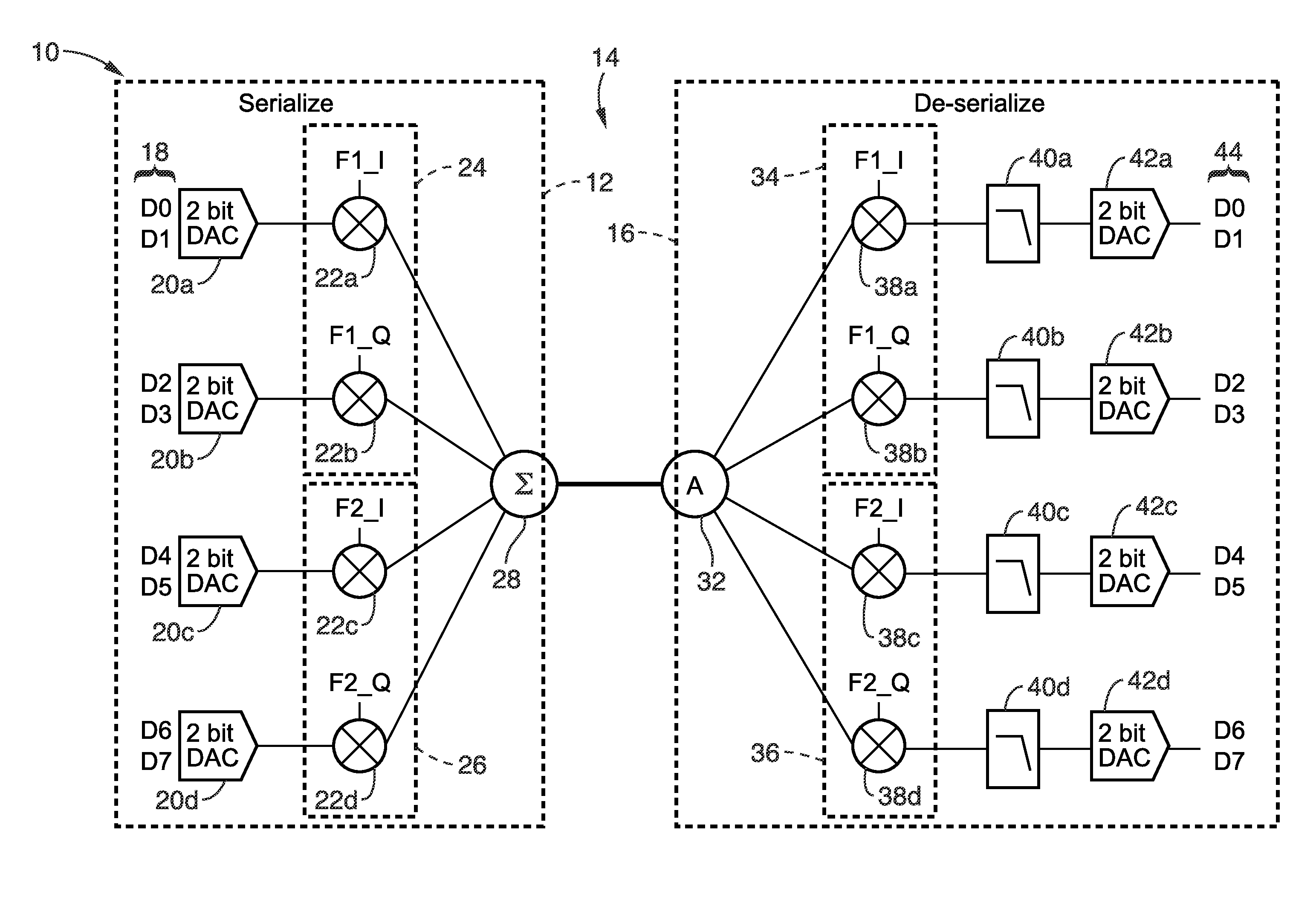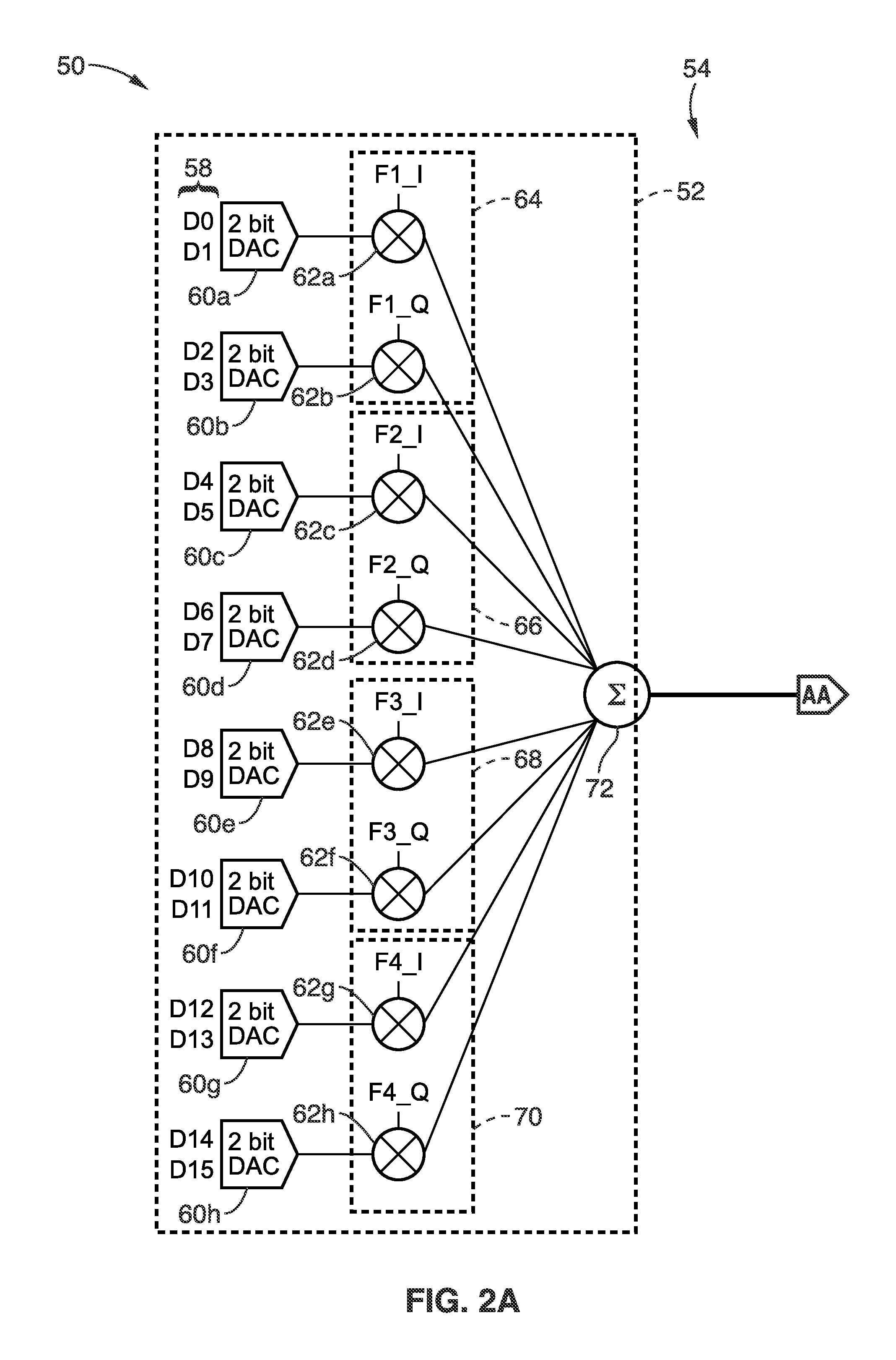Scalable serial/de-serial I/O for chip-to-chip connection based on multi-frequency QAM scheme
a serial/de-serialization and chip-to-chip connection technology, applied in the field of serializers and deserializers based on quadrature amplitude modulation (qam), can solve the problems of increasing the clock rate of communication, increasing the i/o bandwidth at the expense of higher manufacturing costs, and increasing the cost of 3d integrated circuit integration even further. , to achieve the effect of reducing the number of interconnections or simplifying the interconnection
- Summary
- Abstract
- Description
- Claims
- Application Information
AI Technical Summary
Benefits of technology
Problems solved by technology
Method used
Image
Examples
Embodiment Construction
[0017]FIG. 1 illustrates an example embodiment 10 of chip-to-chip communications between a first chip 12 over an I / O connect 14 to a second chip 16. The chip-to-chip communication is performed by serializing parallel digital data (having N bits) onto an analog signal (sum of M analog signals) which is communicated to a second chip, where the analog signal is de-serialized back into parallel digital data. The communication in this embodiment utilizes multiple (e.g., two) frequency bands encoded with a quadrature amplitude modulation (e.g., QAM) scheme to serialize and de-serialize data through an input-output chip connection, providing chip-to-chip communications. Embodiments of the present invention can utilize more than two frequency bands into which the digital data is encoded. It should be appreciated that one of these modulation frequencies can be zero, that is DC. Using DC as one modulation frequency can reduce the number of frequency generation circuits needed, including phase...
PUM
 Login to View More
Login to View More Abstract
Description
Claims
Application Information
 Login to View More
Login to View More - R&D
- Intellectual Property
- Life Sciences
- Materials
- Tech Scout
- Unparalleled Data Quality
- Higher Quality Content
- 60% Fewer Hallucinations
Browse by: Latest US Patents, China's latest patents, Technical Efficacy Thesaurus, Application Domain, Technology Topic, Popular Technical Reports.
© 2025 PatSnap. All rights reserved.Legal|Privacy policy|Modern Slavery Act Transparency Statement|Sitemap|About US| Contact US: help@patsnap.com



